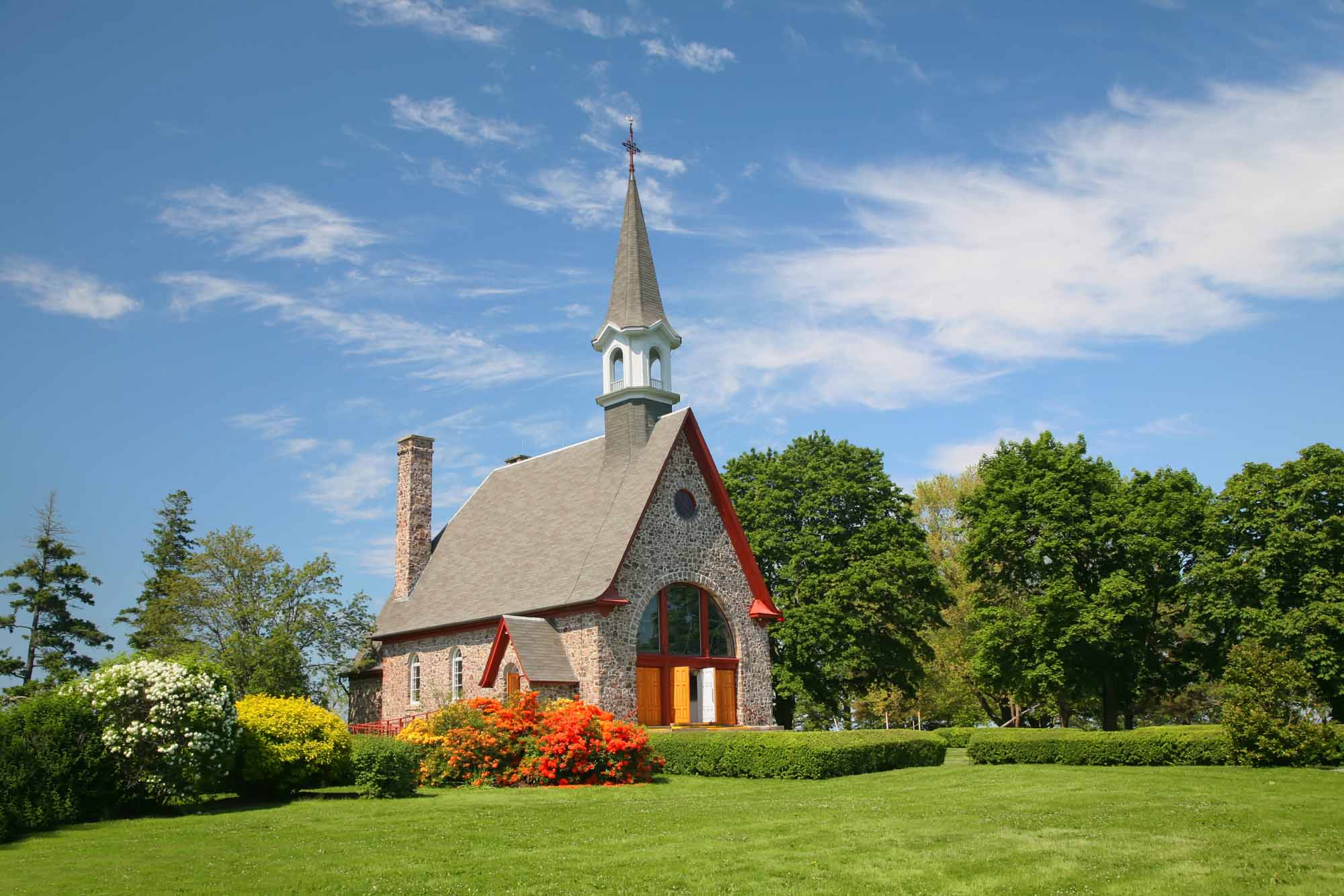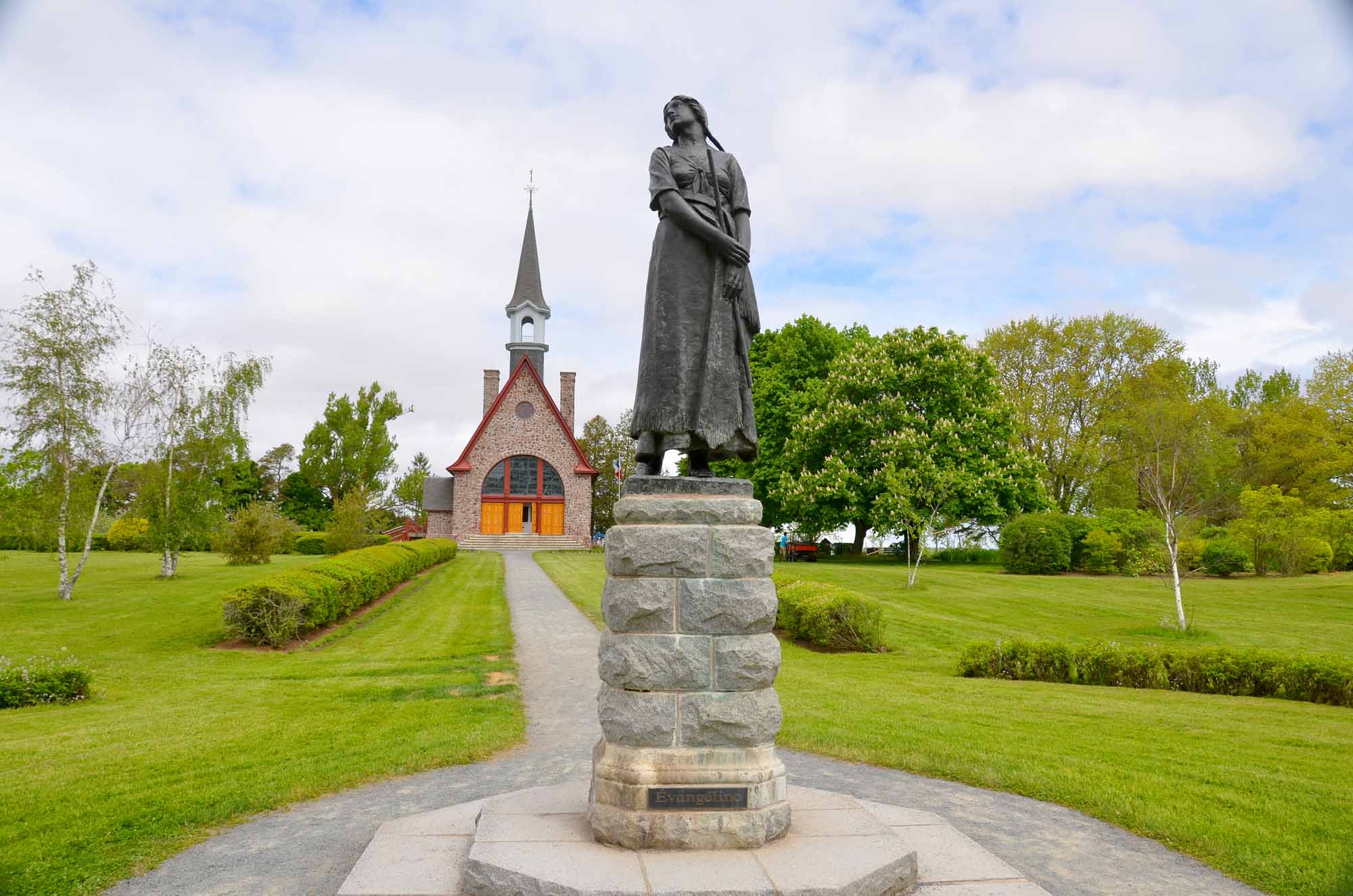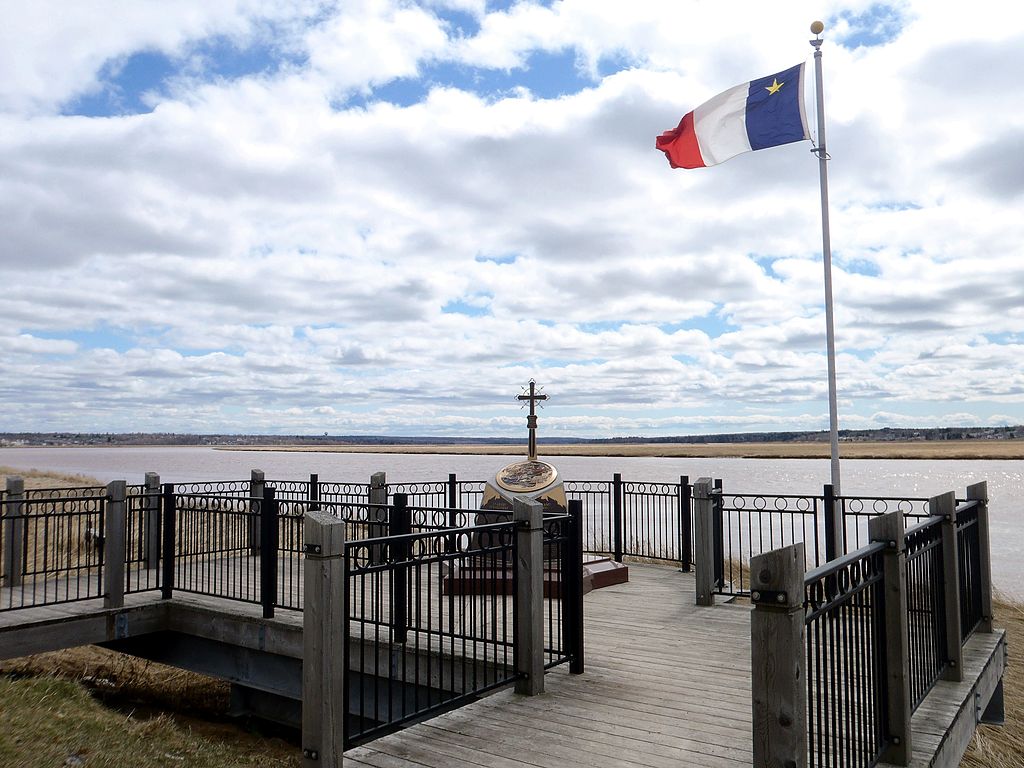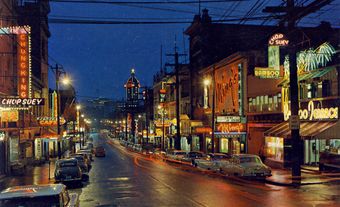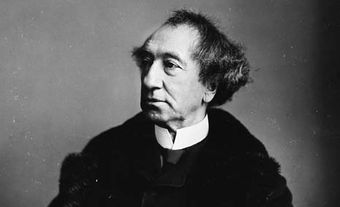The following article is part of an exhibit. Past exhibits are not updated.
Well known for their holiday spirit, Acadians form one of the oldest and most important francophone communities in Canada. There are at least 500,000 Acadians living in the country, the majority of them residing in Québec, New Brunswick, Nova Scotia, Prince Edward Island and Newfoundland. There are also Acadians and French Canadians living south of the border, in Maine.
Arriving in North America some 400 years ago, Acadians have established oral and written traditions through which they affirm their identity. From the characters in Antonine Maillet’s La Sagouine to the fiercely modern poetry of Herménégilde Chiasson, from the songs of Édith Butler to the chiac rap of Radio Radio, the art and culture of Acadia are at the forefront of this living identity.
On the occasion of the Acadian National Holiday (15 August), The Canadian Encyclopedia is featuring an exhibit exploring different aspects of Acadian culture, giving pride of place to folklore, literature and music.
Acadian Folklore

Until the end of the 19th century, the Acadians lived in isolated groups and had little contact with the outside world. This isolation helped to preserve the traditions of their ancestors: their way of speaking (which is a variant from the Poitou region in France), their cuisine, their celebrations and their oral traditions. Since the Acadians’ arrival on the North American continent in the 17th century, they have passed down songs, stories and legends from generation to generation.
Before 1940, there were very few documents that illustrated Acadian folklore , and no real ethnographic research had been carried out. During the 1950s, Luc Lacourcière and Félix-Antoine Savard of Université Laval’s Archives de folklore carried out research into Acadia’s intangible heritage. Enthused by the richness of the Acadian oral tradition, they were able to generate significant collections of tales, legends and songs.
Since 1966, the Université de Moncton has offered courses in folklore and, in 1970, the Centre d’études acadiennes was founded. Acadians themselves, with Father Anselme Chiasson at their head, quickly gathered folkloric material and created significant collections. Some of them, notably famous Acadians Édith Butler, Angèle Arsenault and Antonine Maillet, went to Québec with Lacourcière to pursue their studies.
During the 1970s and 80s, a considerable number of ethnologists crisscrossed Acadia enriching archival collections while writing scholarly articles, monographs and works on the subject of Acadian folklore. The link between Acadia and its folklore has yielded a significant literary heritage: history books, legends, songs, recipes and novels. Today, the “Acadian corpus” figures prominently in the intangible cultural heritage of North American francophones.
Mi-Carême
Mi-Carême, Mid-Lent, in French Canadian tradition, is the time when people dress up in disguise and go from house to house asking for treats, singing and dancing in the Mumming tradition. An interesting variation is found in parts of Acadia, where the Mi-Carême becomes a kind of St Nicholas figure: a person disguised as an old woman mummer distributes treats to good children. Mi-Carêmes are also used as frightening figures, and as bringers of children (in place of storks or cabbages).
Tintamarre

First held in 1955 to commemorate the bicentenary of the expulsion of the Acadians from the Maritime provinces, the Tintamarre takes its inspiration from a medieval French custom during which a crowd makes as much noise as possible in order to mark a sad or a joyful event. In the case of Acadia’s Fête nationale (National Acadian Day), celebrated on August 15, the Tintamarre embodies both the sadness of the Grand Dérangement (the “Great Upheaval” caused by the expulsion of the Acadians), during which many families were separated and many people drowned in shipwrecks, and joy at the survival of Acadian culture. Parade participants wear make-up and costumes in the Acadian colours: blue, white and red with a gold star. In some communities, in addition to costumes and flags, there are parades of giant puppets. Many communities, from Moncton to Summerside, P.E.I., including Caraquet, N.B., and Clare and Chéticamp, N.S., have started their own Tintamarre tradition on a smaller or larger scale.
Acadian Literature from 1606 to 1958
Strategically located for trade, Acadia was long coveted by both France and England. Even though Acadia had only distant ties with the culture and institutions of New France, it was in Acadia that Marc Lescarbot wrote North America’s first French literary works: Les Muses de la Nouvelle France and Théâtre de Neptune in 1606 and Histoire de la Nouvelle France in 1609.
Later, visitors such as Pierre Biard, Chrestien Leclercq, Nicolas Denys, Dièreville, Pierre Maillard and Joseph-Mathurin Bourg wrote documents describing Acadia’s geography and its settlements as well as its flora and fauna. Information about the period after the deportation of the Acadians comes mostly from correspondence. The deportation of the Acadians became the subject of a poem and a story of great significance in the Acadian imagination — Henry Wadsworth Longfellow’s poem “Evangeline” (1847) and Napoleon Bourassa’s novel Jacques et Marie (1865–66), respectively.
In this period, Acadian thought and literature were dominated by the nationalist debate rooted in the works of Rameau de Saint-Père (La France aux colonies , 1859) and encouraged by clergy from Québec, who adopted his theories. Seeking to embrace politics, the economy and sociographic research, the debate was the focal point of cultural activity, fostering recovery from the trauma of the deportation and redefining the character of the Acadian community. The growing interest in the history of Acadia gave birth to the “Acadian Renaissance,” the beginnings of which were marked by the establishment of the first Acadian newspaper, Le Moniteur Acadien, in 1867.
One individual — Pascal Poirier — stands out as an intellectual. His lectures and essays on history and linguistics (Origine des Acadiens, 1874; Le parler franco-acadien et ses origines, 1929) continued to be read in the 20th century.
The mid-20th century heralded a reassessment of the nationalist debate, and a number of crises led to significant socio-political and cultural change. Authors turned to other subjects: for example, Donat Coste wrote L’Enfant noir (1957) to denounce modern society’s hypocrisy. It was the dawn of a transition period for Acadian literature, and with it came the first publications of Antonine Maillet. Her first novel, Pointe-aux-Coques (1958), dealt with life in a small Acadian village.
The Renewal of the 1960s

After the Official Languages Act was passed, Acadian literature became established through specific literary products and institutions (magazines, publishing houses and, later, literary awards) and through the use of those creative works to generate a critical discourse on the literature.
It was in this context that an activist style of poetry first appeared, conveying primarily a search for identity and rebellion against traditional Acadian values. It became a way for the younger generation, using poetry, to speak out about identity and, more broadly speaking, politics. The desire to create a country is embodied in texts by Raymond LeBlanc ( Cri de terre, 1972), while a sad and violent denunciation of an Acadia where the collective vision remains uncertain characterizes the work of Herménégilde Chiasson (Mourir à Scoudouc, 1974).
The Acadian novel was dominated by the works of Antonine Maillet, whose boundless energy combined the epic with everyday events and harnessed all the resources of the oral tradition of popular legend and storytelling. Acadian writers have taken an interest in history as well. For example, Louis Haché used his knowledge of archival sources to retrace the history of Acadian life in northeastern New Brunswick. The writing of another major literary figure, Serge Patrice Thibodeau ( La septième chute, 1990; Le cycle de Prague, 1992; Le quatuor de l'errance , 1995), reflects both a spiritually charged quest for another world and a firm intention to move away from conventional Acadian themes.
Brought to the big screen, Les Portes tournantes (1984) is one of the most significant productions of its genre and stands alongside a number of other novels by Jacques Savoie (also known for his body of work in film). France Daigle’s work cannot be overlooked. The way she has renewed her writing and maintained a coherent approach to it can be seen from novel to novel, from Sans jamais parler du vent (1983) right through to Pour sûr (2011). Questions relating to the languages of writing and particularly the use of English or Chiac (a variety of Acadian French heavily mixed with English), or indeed any standardized language, cut across contemporary literary creation and show its intrinsic diversity.
Emergence of Professional Theatre in Acadia
Theatre came to Acadia with the first French colonists, and by the 1970s, French-language theatre in the Maritimes was a significant part of the region’s flourishing arts scene. Although Acadian theatre has gradually become more professionalized, it remains a community activity — a living practice, rather than a literary one, contributing to the growth of an authentically Acadian theatrical repertoire.
The founding of collèges classiques (classical colleges) in Acadia in the late 19th century encouraged the development of French-language theatre. Productions included plays from the French repertory as well as a few plays by Acadian priests and educators such as Alexandre Braud and Jean-Baptiste Jégo.
In the late 1950s and the early 1960s, theatre in Acadia grew more dynamic, as the result of two developments: the founding of theatre companies not affiliated with colleges, such as Laurie Henri’s Théâtre Notre-Dame de Grâce, and the production of the first play by Antonine Maillet, Entr’acte, at Collège Notre-Dame d’Acadie in 1957.
In Moncton, an amateur company, Les Feux-Châlins (1969–76), scored a number of theatrical firsts: the first production, in 1971, of La Sagouine, written by Antonine Maillet, directed by Eugène Gallant, and starring Viola Léger, and the 1974 production of Tête d’eau, the first play by author, playwright and director Laval Goupil. The Théâtre populaire d’Acadie (T.P.A.), founded in Caraquet, NB by Réjean Poirier in 1974, produced Goupil’s second play, Le Djibou, in 1975, as well as plays by Jules Boudreau, such as Louis Mailloux (co-written with Calixte Duguay) in 1975 and Cochu et le soleil in 1977.
The former Théâtre Notre-Dame de Grâce, renamed the Théâtre amateur de Moncton (1969–80), also presented works by Acadian playwrights, including the important play Les Crasseux,by Antonine Maillet, in a production directed by Jean-Claude Marcus in 1977.
Marcus was a professor in the drama department of the recently founded Université de Moncton, where a large share of Acadian theatre artists would receive their training from then on. In 1977–78, the first cohort of graduates from this department founded L’Escaouette, a co-operative theatre company that built its name through its tours of rural areas, its collective creations, its youthful audiences, and its determination to move beyond Acadian folklore and address other subjects. With Herménégilde Chiasson as its principal playwright, L’Escaouette gradually became a dominant force in the 1980s and 1990s. The company worked to develop an Acadian repertory, in particular by producing a trilogy of plays on Acadian history: Histoire en histoire (1979–80) and Renaissances au pluriel (1984–85), by Chiasson, and Les sentiers de l’espoir (1983–84), by Gérald Leblanc.
Crisis and Ferment of Professional Theatre

Over the 1990s, Chiasson wrote many more plays for the increasingly professional L’Escaouette theatre company. They included the identity-themed trilogy L’exil d’Alexa (1993), La vie est un rêve (1994), and Aliénor (1997).
In 1996, Louise Lemieux and several of her graduates from the Université de Moncton drama program, including Lynne Surette, Philip André Colette, Amélie Gosselin, and Karène Chiasson, joined forces to form Moncton Sable, an innovative theatrical collective that focused more on formal experimentation than on interpretation of text. The collective also mounted productions in collaboration with France Daigle, Paul Bossé, and other playwrights.
Also during the 1990s, to encourage Acadian playwrights, L’Escaouette founded Le Festival à haute voix, a biannual series of readings of plays at various stages of development. One of the participating playwrights, Emma Haché, received a Governor General's Literary Award in 2004 for her play L’intimité.
Musical Traditions in 19th and 20th Century
The Acadians brought hundreds of old French songs, many of which were originally accompanied by dances , to each region of the Maritime provinces in which they settled.
Music education has existed in Acadia since the first classical college was founded in New Brunswick in 1864. At Collège Saint-Joseph in Memramcook and later Collège du Sacré-Cœur in Caraquet (1899) and Bathurst (1916), choirs that performed at religious ceremonies were formed, as well as bands , called “fanfares,” that participated in celebrations and parades. Male and female Acadian choirs won a number of international awards in the 1950s and 1960s under the leadership of choirmasters Léandre Brault, Neil Michaud, Florine Després, and Lorette Gallant.
Many classically trained Acadian musicians made a name for themselves internationally. Anna Malenfant , born in Cap-Pelé, New Brunswick, in 1902, also made a career in Montréal after completing her studies in Europe. She sang at the Variétés lyriques, played the lead in the opera Carmen , and performed in a number of operas in Montréal. She was a member of the Trio lyrique for 30 years under the leadership of Lionel Daunais. The violinist Arthur Leblanc, born in New Brunswick in 1906, is perhaps the most famous Acadian musician of the 20th century. After studying music in France, he became first violin in the Orchestre Symphonique de Paris in 1935 and performed on the biggest stages of Europe and North America.
Acadian songwriters are highly popular in French Canada and some have even become well known in Europe. Édith Butler , born in Paquetville, New Brunswick, in 1942 and Angèle Arsenault (1943–2014), born in Prince Edward Island, had long careers that took them all over Canada and Europe, and they produced albums that were highly successful, especially in Quebec. Edith Butler has popularized a number of traditional Acadian songs.
21st Century Musical Diversity

Acadian music is more diverse now than in the past. Several factors have contributed to this trend, such as the development of music education in schools, scholarships offered by Acadian cultural organizations, the creation of community broadcasting stations and access to electronic distribution networks.
The Université de Moncton’s music department has also become a place for talented young musicians to meet. Isabelle Thériault trained there and became a member of the female group Les Muses (1999–2004) and music director of the Ode à l'Acadie group (2004–2010). The group, formed for a show marking the 400th anniversary of Acadia in 2004, was a phenomenal success and contributed to the revival of Acadian music. The Gala de la Chanson de Caraquet, an annual competition held since 1969, continues to draw young talent. The members of the female trio The Hay Babies met there before forming in 2012.
Today, Acadian minority regions are fully involved in musical life. On Prince Edward Island, the Barachois, Gadelle and Vishtèn “revival” groups are giving new life to traditional songs through fresh instrumental arrangements, and Lennie Gallant is singing in both French and English. In southwestern Nova Scotia, the band Grand Dérangement is following in the footsteps of 1755 by writing traditional songs, while the Radio Radio rap duo are innovating and adapting Acadian texts to a style of music similar to hip-hop.
Finally, singer and actress Marie-Jo Thério’s success in the last 20 years in both Québec and France has opened the door for a new generation of singer-songwriters. New Brunswick is seeing an explosion of musical talent that includes country singers such as Hert Le Blanc and George Belliveau, songwriters such as Pascal Lejeune, Danny Boudreau and Joseph Edgar, and such singers as Lina Boudreau, Lisa Le Blanc and Sandra Le Couteur. The internationally renowned folk singer Roch Voisine is also from New Brunswick.

 Share on Facebook
Share on Facebook Share on X
Share on X Share by Email
Share by Email Share on Google Classroom
Share on Google Classroom








